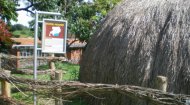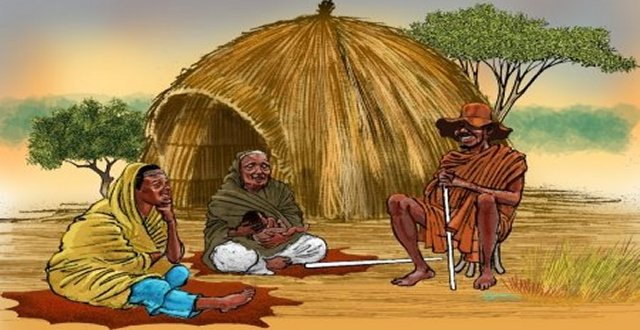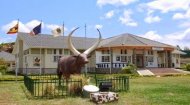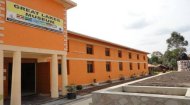
|
Mbarara History |
Mbarara History |
Mbarara History | Mbarara History |
Sanga Village

A cultural centre for the Hima tribe close to Lake Mburo featuring traditional ornaments and regalia.
That's It!

As such, the Buchunku (Mitooma), Matsiko (Nyabushozi), Rutasharara (Isingiro), Ruhara (Rwampara), Nduru (Buzimba), Enganzi Mbaguta (Ngarama, Sheema, Kashaari), Mukotani (Igara), Rubarema (Buhweju), and Kaihura (Bunyaruguru) were all deemed under Nkore rule, whether they accepted it or not, and this was formalised under the Ankole Agreement of 1901, (believing the territory was called Ankole rather than Nkore) with Nkore itself being incorporated into the British protectorate of Uganda. This agreement, while recognising the Omugabe's authority, effectively subjugated the kingdom to British administration. As such, Omugabe Kahaya II became the last independent ruler of Nkore. Mbarara swiftly evolved from a royal capital to a colonial administrative headquarters for the larger Nkore, now Ankole, district. New infrastructure, like roads, administrative buildings, missions, and schools, were established, fundamentally altering the landscape and economy. Traditional governance structures were interwoven with colonial systems, and the introduction of cash crops, taxation, and western education began to reshape social norms and economic activities, albeit often to the detriment of local autonomy and traditional livelihoods. Mbarara’s growth accelerated as it became a centre for trade, evangelism, and governance, attracting people from across the district and beyond. The mid-20th century saw the gradual stirring of nationalism across Africa, and Mbarara, like other key towns, became a space for burgeoning political consciousness on the road to independence. Although the primary centres of political agitation were often in Buganda, the sentiments for self-rule resonated deeply throughout Ankole. The establishment of local political parties and increased access to education fostered a generation of leaders who began to advocate for an end to colonial rule. Discussions around Uganda's future, whether it should be a federal or unitary state, and the role of its traditional kingdoms, were paramount in the lead-up to independence. From Mbarara, delegates and local politicians participated in the broader national conversations and constitutional conferences that eventually paved the way for Uganda’s liberation from British rule. On October 9th, 1962, Uganda achieved that independence, marking a moment of great celebration and hope. For Mbarara, this meant a complex transition. Initially, the Ankole Kingdom, like other traditional polities, was integrated into the new independent Uganda with a degree of autonomy. However, this arrangement was short-lived. In 1967, the first post-independence government under Milton Obote abolished all kingdoms, including Ankole, transforming Uganda into a republic. This was a profound moment for Mbarara, as its identity as a royal capital was officially dismantled. The subsequent decades were marked by political instability, civil strife, and economic decline under successive regimes, most notably the brutal dictatorship of Idi Amin. Mbarara, strategically located, often bore the brunt of these conflicts, witnessing military takeovers, incursions, and significant destruction during the 1978-79 Uganda-Tanzania War, where it became a battleground. The town also played a notable role in the subsequent bush war, which brought the National Resistance Movement (NRM) to power in 1986. The modern era, beginning with the NRM government, ushered in a period of relative peace and reconstruction for Uganda and, consequently, for Mbarara. The government’s emphasis on economic recovery and decentralisation allowed Mbarara to re-emerge as a vital regional hub. While the Ankole Kingdom has not been formally restored by the central government, unlike some other Ugandan kingdoms, the cultural identity and pride of the Banyankole people remain strong. Mbarara has since experienced significant development, becoming a thriving commercial centre, an educational powerhouse with institutions like Mbarara University of Science and Technology (MUST), and a crucial transport junction connecting Uganda to Rwanda, Burundi, and eastern Democratic Republic of Congo. Its elevation to city status in 2020 was a testament to its accelerated growth, urbanisation, and strategic importance. Today, Mbarara stands as a vibrant, dynamic city, a testament to its enduring spirit, a place where the echoes of ancient kingdoms, colonial legacies, and the struggles of independence all converge in a bustling hub poised for continued prosperity. From prehistoric settlements to a modern metropolis, Mbarara's journey is a compelling narrative of continuous adaptation and resilience. |







